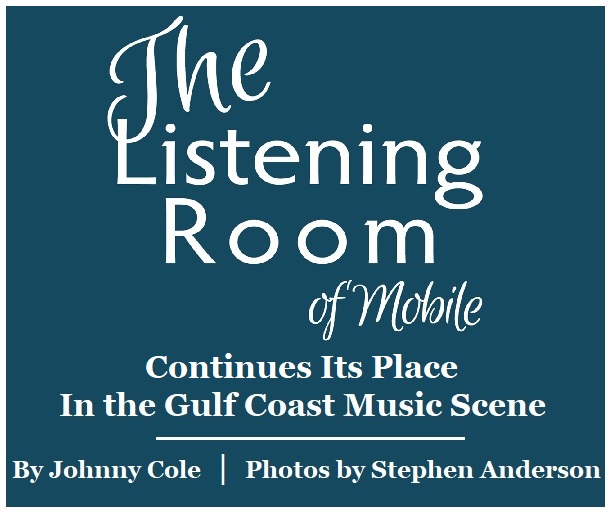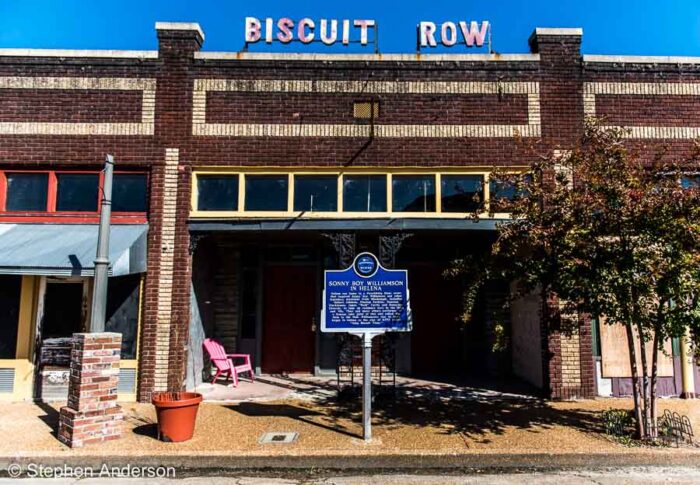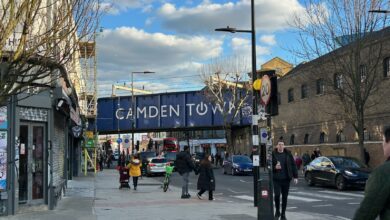The Mississippi Blues Trail Series: Po’ Monkey’s
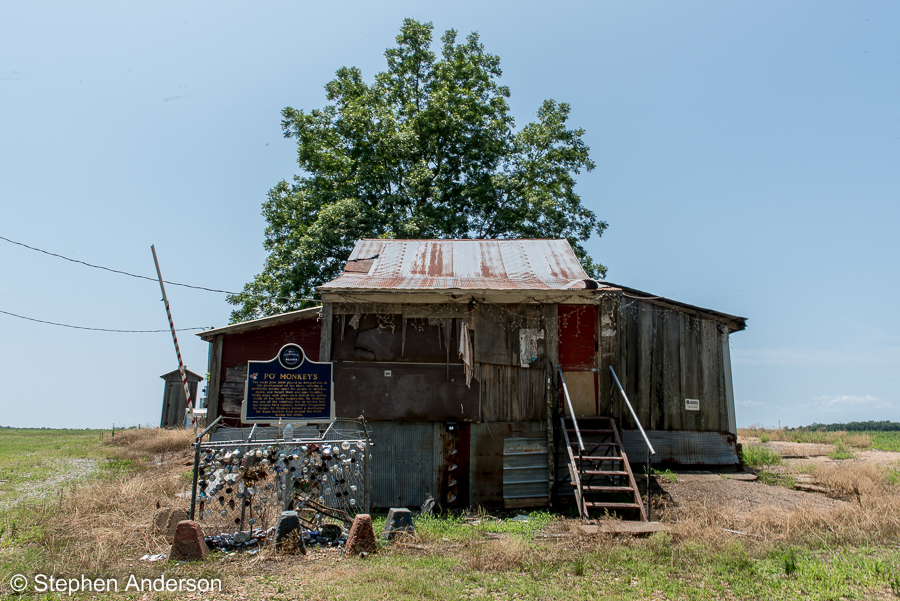 By Deborah Chatham
By Deborah Chatham
Photos by Stephen Anderson
Edited by Johnny Cole
The Southland Music Line continues our Mississippi Blues Trail Series at the marker recognizing Po’ Monkey’s Lounge, an authentic juke joint, located outside of Merigold, Mississippi in an unincorporated area of Bolivar County.
The history of the juke joint in Mississippi is essential to understanding the development of the blues. Juke joints were created by using existing buildings and differed from traditional clubs and bars in that they provided live music to an established clientele. Juke joint hours were based on the availability of musicians and information about shows was spread through word of mouth instead of formal advertising. The defining feature of the juke joint was the sense of community and shared experience of the live music.
Such a description aptly fits Po’ Monkey’s Lounge. In the 1950s, Willie Seaberry, known as Poor (Po’) Monkey took a sharecropper shanty on the Hiter farm and began to operate it as a juke joint. The Hiter family had given Seaberry a lifetime lease on the property, which meant for as long as he lived, he was free to use the property. Although Seaberry worked a regular day job as a cotton picker or a tractor driver, Po’ Monkey’s was where he could be who he wanted. Seaberry became known for his colorful pantsuits, of which he had many. He was known to sneak away from the bar to an adjoining room to change clothes and return showcasing a new pantsuit.
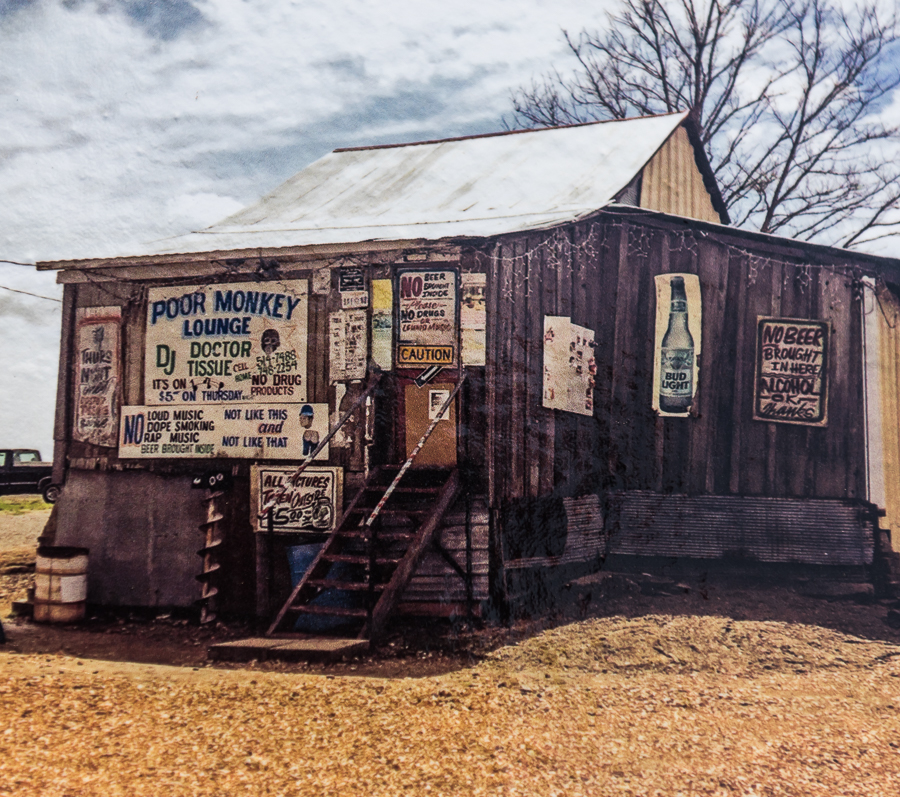 Top Photo: Po’ Monkey’s in 2023 (photo by Stephen Anderson) ; above photo: a historic view of the legendary juke joint (photo by Wanda Clark)
Top Photo: Po’ Monkey’s in 2023 (photo by Stephen Anderson) ; above photo: a historic view of the legendary juke joint (photo by Wanda Clark)
In the early days, Po’ Monkeys served as a haven for blacks to socialize without any white interference. Even though the lounge was frequented by a familiar group of patrons, that does not mean it was private or unwelcoming. Quite the contrary, Po’ Monkey’s was welcoming to those who cared to learn about the establishment and socialize with the locals. Po’ Monkey’s Lounge, like most juke joints, was not established primarily to be a money-making business, but to play the blues and have a shared social experience. Indeed, in 2006 Seaberry changed the lounge name to “Poor Monkey’s Social Club.”
In later years, Seaberry displayed a sign greeting patrons with the following instructions, “No Loud Music, No Dope Smoking, No Rap Music.” The building was built with cypress planks and roofed with galvanized steel. The lounge interior was decorated colorfully with various stuffed or plastic monkeys, baby dolls, Christmas lights, and seemingly anything that contributed to livening up the place.
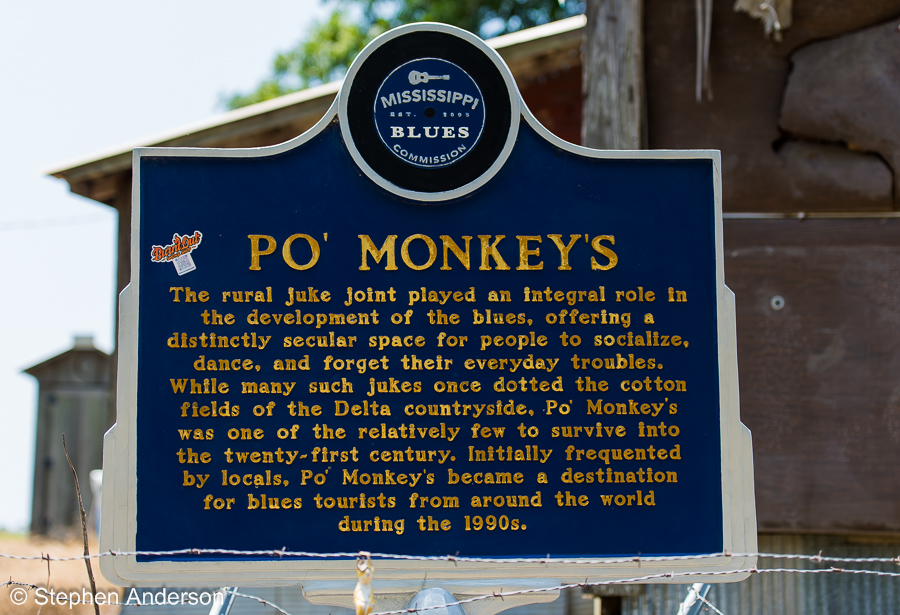 Mississippi Blues Trail marker for Po’ Monkey’s near Merigold, MS, one of the relatively few juke joints to survive into the 21st century.
Mississippi Blues Trail marker for Po’ Monkey’s near Merigold, MS, one of the relatively few juke joints to survive into the 21st century.
Throughout the 1990s Po’ Monkey’s became a popular blues scene attracting college students from nearby Delta State University in Cleveland, MS. By the 2000s, activity at Po’ Monkeys began to wind down and once again became more of a local music scene. During this time Mr. Seaberry began to establish Thursday nights as “Family Night.” Locals believed this signaled the beginning of the weekend. Often a disc jockey played the blues and soul music if no musicians were available. The lounge maintained a code of behavior that included the rules: no drugs, no violence, and no disrespect. The crowd consisted of an integrated group of regulars. Po’ Monkeys was an established part of the Delta Blues scene.
In 2009, the Mississippi Blues Commission placed a marker commemorating Po’ Monkey’s contribution to the Delta blues and highlighting one of the few remaining operating juke joints.
Po’ Monkeys continued operating until Willie Seaberry’s death on July 14, 2016. The land and building reverted back to the ownership of the Hiter family. The abandoned building stands as a reminder of bygone days when Po’ Monkeys operated as a hub for artists to play and patrons to hear the Mississippi Blues.
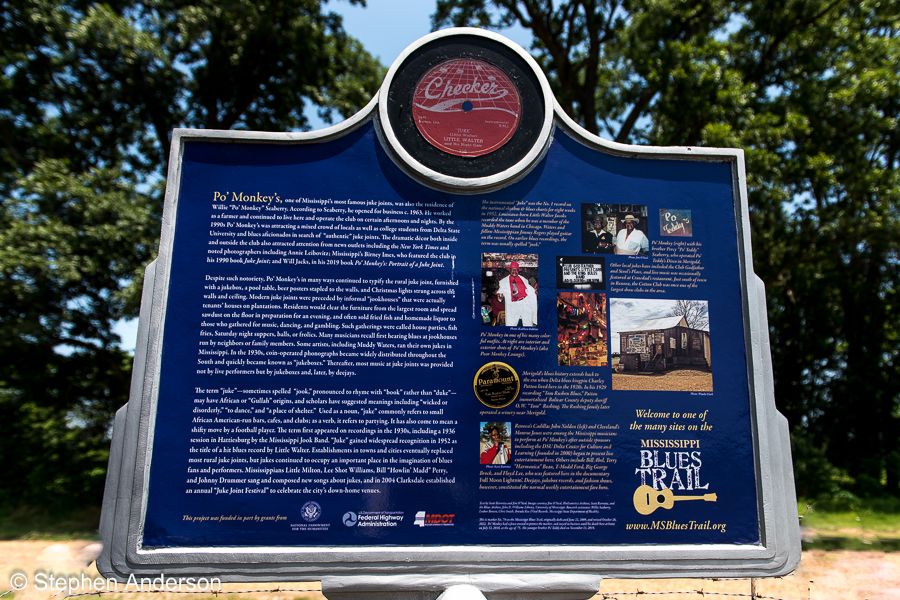 Mississsippi Blues Trail marker for Po’ Monkey’s (the reverse side)
Mississsippi Blues Trail marker for Po’ Monkey’s (the reverse side)
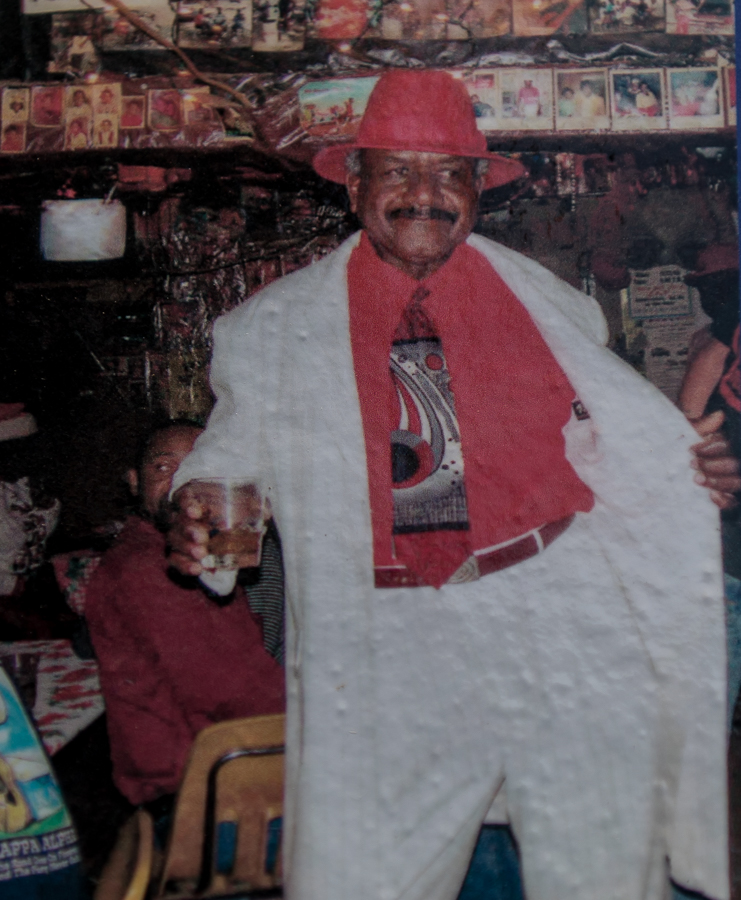 Willie Seaberry, known as Poor (Po’) Monkey, was known for his many colorful pantsuits. In the 1950s, he took a sharecropper shanty on the Hiter farm and began to operate it as a juke joint (photo by Kathleen Robbins)
Willie Seaberry, known as Poor (Po’) Monkey, was known for his many colorful pantsuits. In the 1950s, he took a sharecropper shanty on the Hiter farm and began to operate it as a juke joint (photo by Kathleen Robbins)
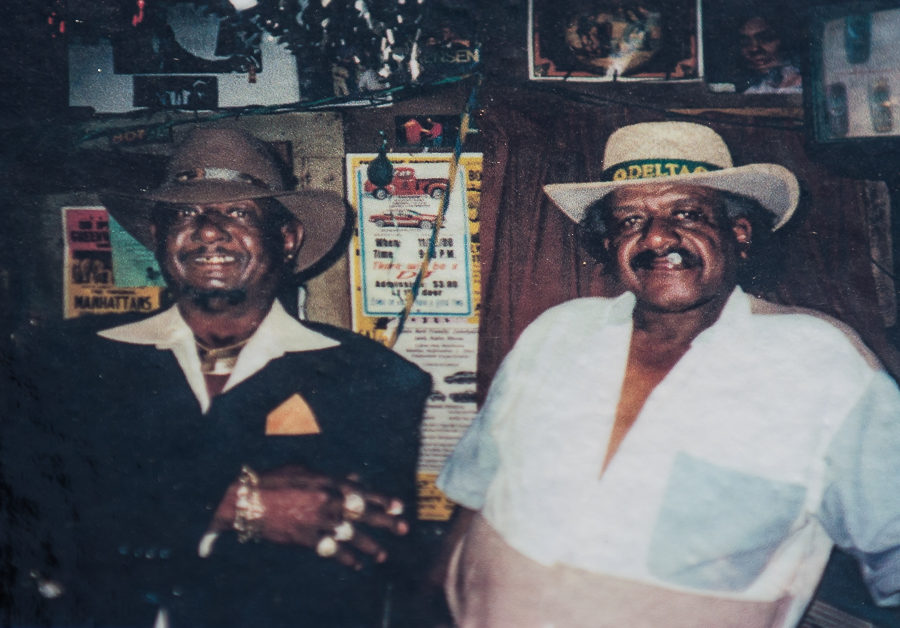 Willie “Po’ Monkey” Seaberry (right) with his brother Percy “Po’ Teddy” Seaberry, who operated Po’ Teddy’s Disco in Merigold (photo by Jim O’Neal)
Willie “Po’ Monkey” Seaberry (right) with his brother Percy “Po’ Teddy” Seaberry, who operated Po’ Teddy’s Disco in Merigold (photo by Jim O’Neal)
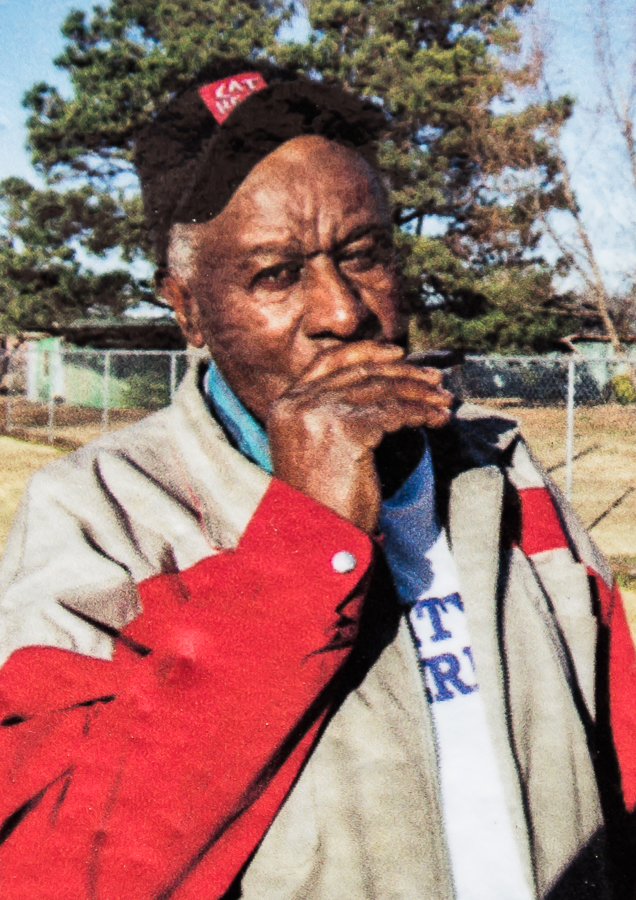 Renova’s Cadillac John Nolden (above) and Cleveland’s Monroe Jones were among the Mississippi musicians to perform at Po’ Monkey’s after outside sponsors including the DSU Delta Center for Culture and Learning (founded in 2000) began to present live entertainment at the famous juke joint. Others to perform were Bill Abel, Terry “Harmonica” Bean, T-Model Ford, Big George Brock, and Floyd Lee, who was featured at Po’ Monkey’s in the documentary “Full Moon Lightnin'” (photo by Scott Barretta)
Renova’s Cadillac John Nolden (above) and Cleveland’s Monroe Jones were among the Mississippi musicians to perform at Po’ Monkey’s after outside sponsors including the DSU Delta Center for Culture and Learning (founded in 2000) began to present live entertainment at the famous juke joint. Others to perform were Bill Abel, Terry “Harmonica” Bean, T-Model Ford, Big George Brock, and Floyd Lee, who was featured at Po’ Monkey’s in the documentary “Full Moon Lightnin'” (photo by Scott Barretta)
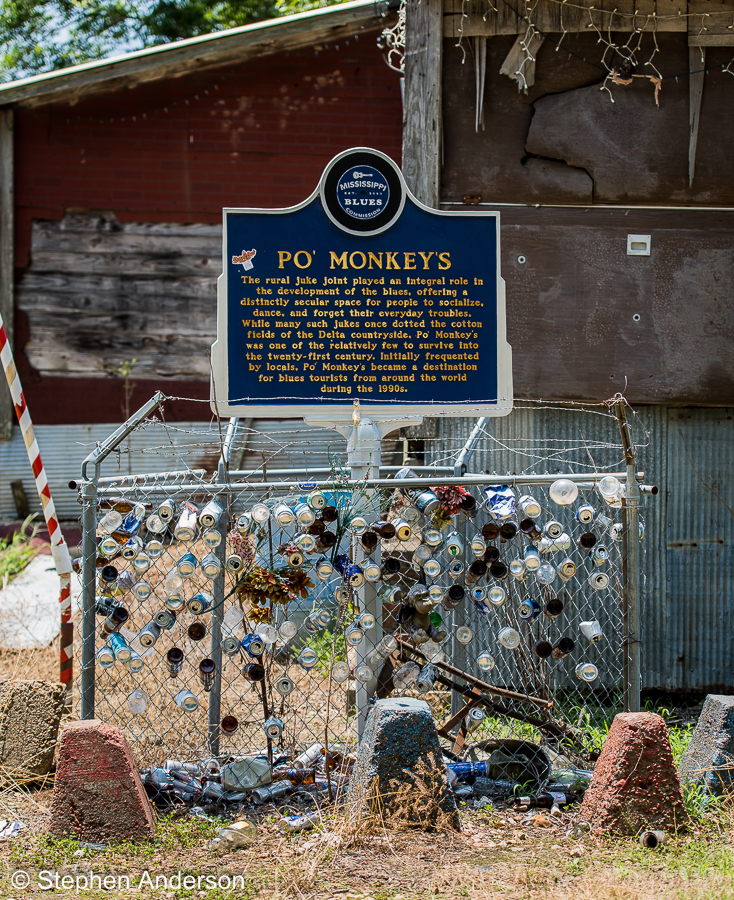 Mississippi Blues Trail marker for Po’ Monkey’s. The famous juke joint closed its doors in 2016 at the time of Po’ Monkey’s death.
Mississippi Blues Trail marker for Po’ Monkey’s. The famous juke joint closed its doors in 2016 at the time of Po’ Monkey’s death.
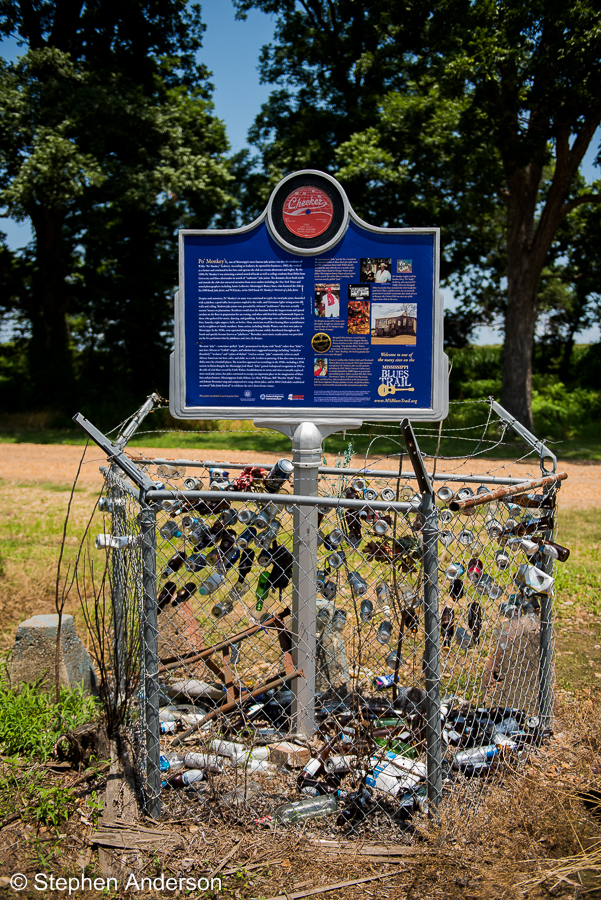 Mississippi Blues Trail marker for Po’ Monkey’s, a reminder of the many juke joints that once operated across the state.
Mississippi Blues Trail marker for Po’ Monkey’s, a reminder of the many juke joints that once operated across the state.
Click Here for Other Articles in our Mississippi Blues Trail Series.
References:
1. Mississippi Blues Trail official website.
2. Southern Spaces – Inside Po’ Monkey;s
3. Wikipedia – Po’ Monkeys
4. Mississippi Encyclopedia – Juke Joints
Page Designed & Edited by Johnny Cole
© The Southland Music Line. 2023.
All rights reserved

COPYRIGHT NOTICE: We welcome requests for permission to use content from The Southland Music Line website and Facebook page. Any shared articles or photos may not be altered, edited nor cropped and must include the appropriate copyrights of The Southland Music Line.


